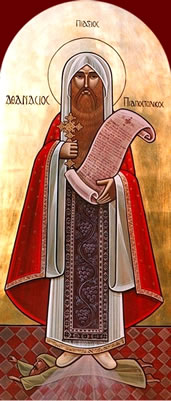Fragment of a letter from Eusebius of Nicomedia to the Council of Nicaea
| Reference | Dok. 23; Urk. 21; CPG 2047 |
| Incipit | [Si verum inquit] |
| Date | June 325 |
| Ancient source | Ambrose, De fide 3.15 (CSEL 78, ed. O. Faller ed., 1962) |
| Modern editions | CSEL 72: AW 3.1:42 |
In his De Fide, Ambrose says that this short passage from a letter of Eusebius of Nicomedia was read at the Council of Nicaea. It is impossible to place chronologically, but there is no reason to believe, as Opitz did, that it was addressed to the council. Since, however, it does bring the term homoousios into play, it may well date to the months immediately preceding the council.
Click here to access a downloadable pdf of this document.
This work is licensed under CC BY-NC-SA 4.0
| [Sicut auctor ipsorum Eusebius Nicomedensis epistola sua prodidit scriuens:] | [Eusebius of Nicomedia, the originator of these things, confirms this when he writes as follows in his letter:] |
| Si uerum, inquit, dei filium et increatum Decimus homoousion cum patre incipimus confiteri. | If we say that the Son of God is also uncreated, we begin to confess that he is of one being (homoousios) with the Father! |
| [Haec cum lecta esset epistola in concilio Nicaeno, hoc uerbum in tractatu fidei posuerunt patres, quia id uiderunt adversariis esse firmidini | [After this letter was read at the Council of Nicaea, the fathers put this same word into their explanation of the faith, because they saw that it was terrifying to their opponents.] |
Back to Early Arian Documents – Next Arian Document
Last updated 1/1/25 by GLT.
No Responses yet
